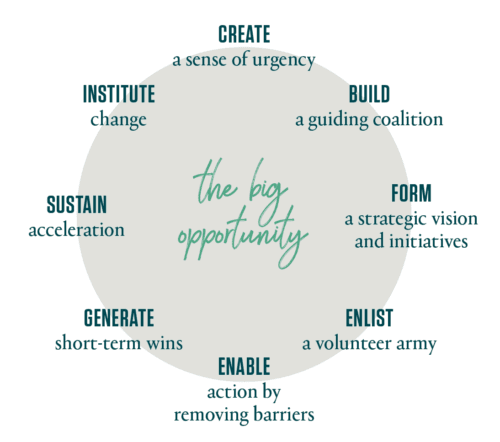How Successful Change Management Can Help You Prepare for Crisis
18 October, 2022

Vitaliy Zhovtyuk
CEO / Managing Director
& Founder

Economists are forecasting the next economic downturn over the next twelve months. How to prepare for the future crisis? Change management could be a solution.
How Successful Change Management Can Help You Prepare for Crisis
The only constant thing is change. So many factors can put your business at risk, including changes in the economy, technology, and business environment. How to manage all these changes? That's what change management is all about. If done right, it can minimize the negative impact of existed challenges or issues that are about to arise.
Today, we're going to show you how change management can help your business prepare for the next downturn and transform to be ready when the storm hits.
Current risks to the economy
In July 2019, we entered the most lasting expansion phase in recent history since the 2008 recession. As composite leading indicators continue to soften in most countries, and some economic risks are on the horizon, forecasters predict the next financial crisis in the nearest future. Nouriel Roubini, an American economist who was one of the few experts who predicted the last crash, forecasts a global downturn by the next year.
The companies worldwide have been already facing faster, more complex, and cross-functional changes than ever before. To deal with the crisis, business leaders should re-evaluate their business models and prepare their teams for harsher economic conditions in advance.
Significance of change management for business stability
In our globalized economy, a lot of things can put your business at risk, including changes in technology, laws, and regulations, as well as customer demands, competition, and market conditions. The tension is growing, especially when the word is on the brink of the next global crisis.
In today's changing landscape, delivering results from change allows businesses to stand out from their competitors. Change management is a structured approach that helps managers prepare, equip, and support employees so that they can embrace change more quickly and efficiently.
The main focus of change management is on people and how they, as team members, transit from the current business environment to the new one. The change could range from a minor process change to significant transformations in technologies or strategy.
Applying principles of change management enables organizations to expand competencies and boost business capacity to deal with various changes at once. If done right, the change management strategy ensures that change is completely and smoothly realized. It also reduces possible adverse effects on a team and productivity overall.
Want to find out how change management can help you implement new technologies in your business processes? Check out our article Digital Transformation & Change Management: How to Be Ready.
Successful change management: Kotter’s 8-step model of change
Studies conducted by John Kotter, a professor of Harvard Business School, have shown that there is only a 30% chance of organizational change success. His research proved that the major change efforts of companies don't always bring the intended results.
Most team members don't always consider change as something positive. But they play a critical part when it comes to implementing the change. To help companies avoid failure and improve their ability to change, Dr. Kotter developed an 8-Step Change Model based on some vital success factors:
Create a sense of urgency thought an open and aspirational dialogue to help your team see the importance of immediate change. Talk with them about possible threats that could appear in this turbulent situation and discuss potential solutions.
Build a coalition of active change agents to guide, coordinate, and encourage others on the way to change your company wants to implement. Generally, this project team consists of people working in different positions so that all employees can rely on and identify themselves with them.
Create a clear vision and initiatives for change to clarify the reason behind it and explain the strategy used to reach the final result. This helps everyone in your team understand what the company is trying to achieve within the specific time frame and show their role in this process.
Communicate the vision regularly to ensure that everyone in your company is on the same page. Talk about the new initiatives at every chance you get to create team support and reduce anxiety.
Remove barriers such as ineffective processes that could undermine the vision and prevent the change implementation.
Generate short-term wins to track progress, motivate the team to move forward, and show that you’re moving in the right direction.
Sustain acceleration by analyzing what went right and what should be improved to initiate change after change until the vision becomes a reality.
Anchor changes in corporate culture. The change initiative should become a part of the day-to-day work of your team. Make sure that new values hold a valuable place in the company's life.

Do you know how your team members experience change and what they need to make a successful transition? By following this strategic 8-step plan, you'll find out their needs and help them accept change more effectively. As a result, your company will be able to respond to market change more quickly as well as adopt new initiatives and technologies with less productivity impact.
Are you ready for changes?
The future crisis will challenge many companies around the world, but only a few will get stronger and competitively. Leaders who start preparing for changes beforehand will have more chances for success and avoid risks along the way.
Digital transformation can also help your business stay ahead of the curve and prepare for the global downturn. As experts in digitalization, the Applied Methods team is here to help you find the best solution. If you're ready for digital conversion, contact us today.



